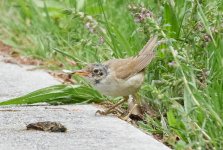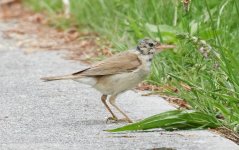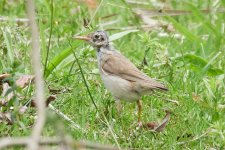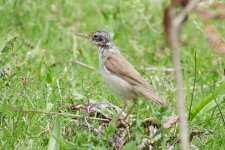This afternoon I saw this young bird. (Netherlands, Flevoland, Oostvaardersplassen) It was relatively tame, and actively foraging on and near a path. When disturbed by a passing mountain biker, it was back in no time. It was near both reeds/high grasses and forest/trees/scrub. Its blackish and baldish head confuses me, otherwise I'd think maybe a Reed or Marsh Warbler (probably the latter, judging by the colour of its legs). Although very tame in its behaviour for either one.
Could somebody tell what bird it is?
Regards, Frank
Could somebody tell what bird it is?
Regards, Frank







